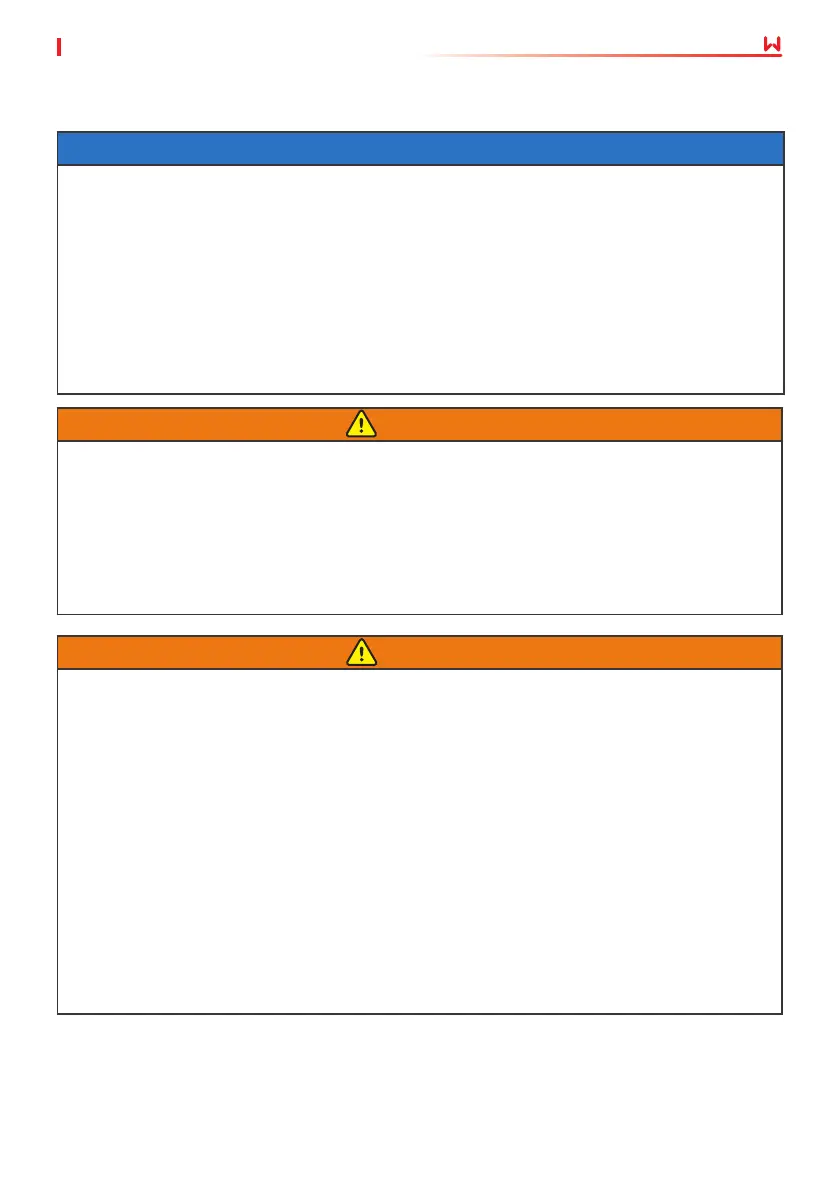33
User Manual V1.4-2022-08-30 06 Electrical Connection
6.6 Connecting the AC Cable
WARNING
• Connect the AC cables to the corresponding terminals such as “L”, “N”, and PE correctly.
Otherwise it will cause damage to the inverter.
• Ensure that the whole cable cores are inserted into the terminal holes. No part of the cable
core can be exposed.
• Ensure that the cables are connected securely. Otherwise it will cause damage to the
inverter due to overheat during its operation.
NOTICE
• Install one AC circuit breaker for each inverter. Multiple inverters cannot share one AC circuit
breaker. Do not connect loads between the inverter and the AC switch directly connected to
the inverter.
• An AC circuit breaker shall be installed on the AC side to make sure that the inverter can
safely disconnect the grid when an exception happens. Select an appropriate AC circuit
breaker in compliance with local laws and regulations.
• For AC cable, the PE conductor shall be longer than N&L conductors, so that once the AC
cable slips or taken out, the protecting earth conductor will be the last to take the strain.
WARNING
• Do not connect any AC generator to the ON-GRID or BACK-UP port.
• The Residual Current Monitoring Unit (RCMU) is integrated into the inverter. The inverter
will disconnect the utility grid rapidly once it detects any leak current over the permissible
range.
• There are integrated relays inside of the inverter’s ON-GRID and BACK-UP AC ports. When
the inverter is in the o-grid mode, the ON-GRID relay is disconnected; while when the
inverter is in grid-tied mode, it is connected.
• When the inverter is powered on, the BACK-UP AC port is live. Power o the inverter rst
if maintenance is required for the loads connected with BACK-UP ports. Otherwise, it may
cause electric shock.
• Connect a Residual Current Device (RCD for short) based on local laws and regulations.
A type A RCD can be connected to the inverter for protection when DC component of the
leakage exceeds the limit. Recommended RCD specications: ≥30mA.
